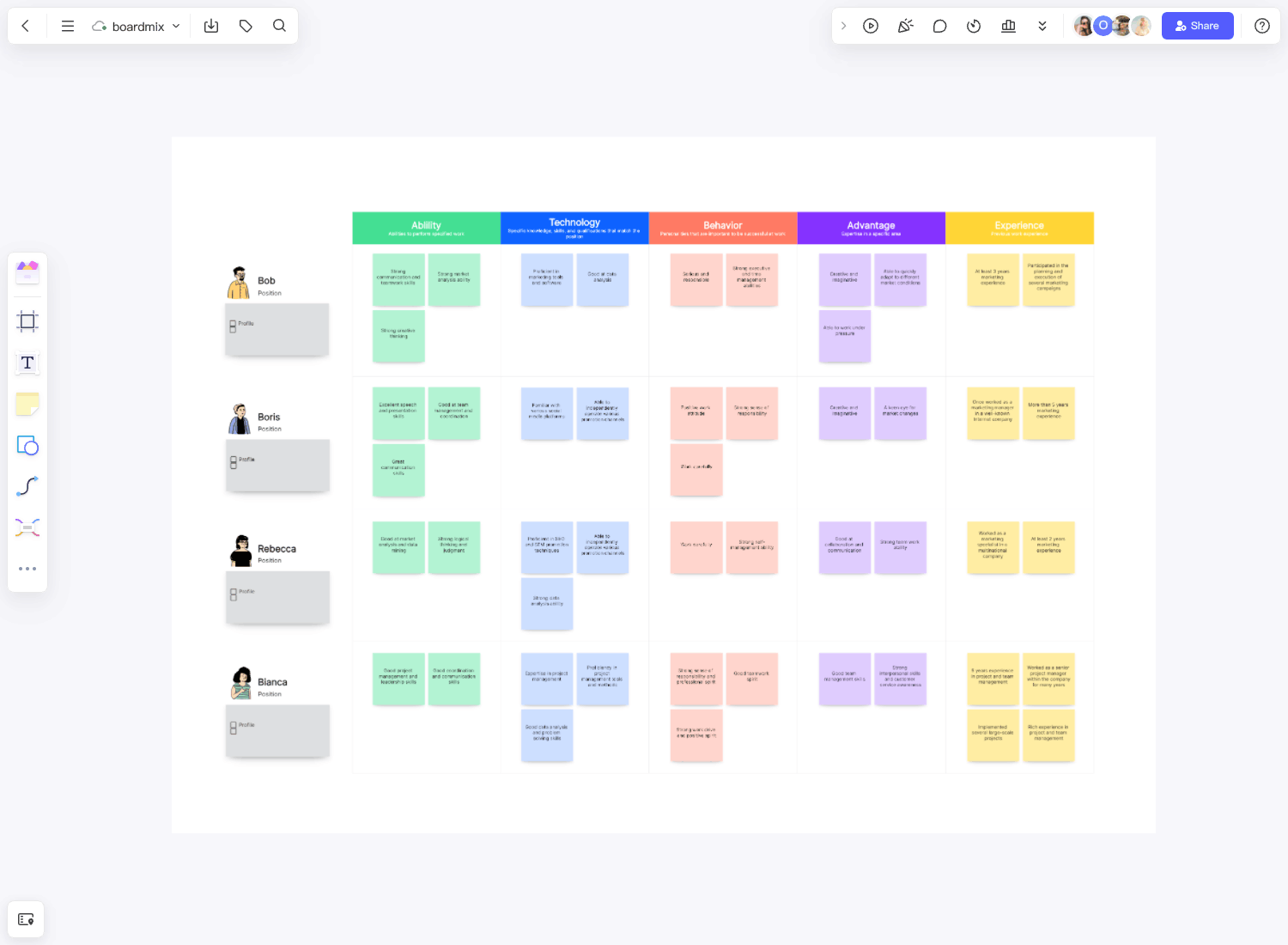To achieve long-term success for your business, it's vital to have the right individuals handling each task within the organization. When everyone fulfills their responsibilities effectively, the company is more likely to prosper. HR teams employ various tools to find such individuals, with the competency model being the most trusted and effective method. This model ensures that the right people are selected, ensuring a thriving operation.
What is a competency model?
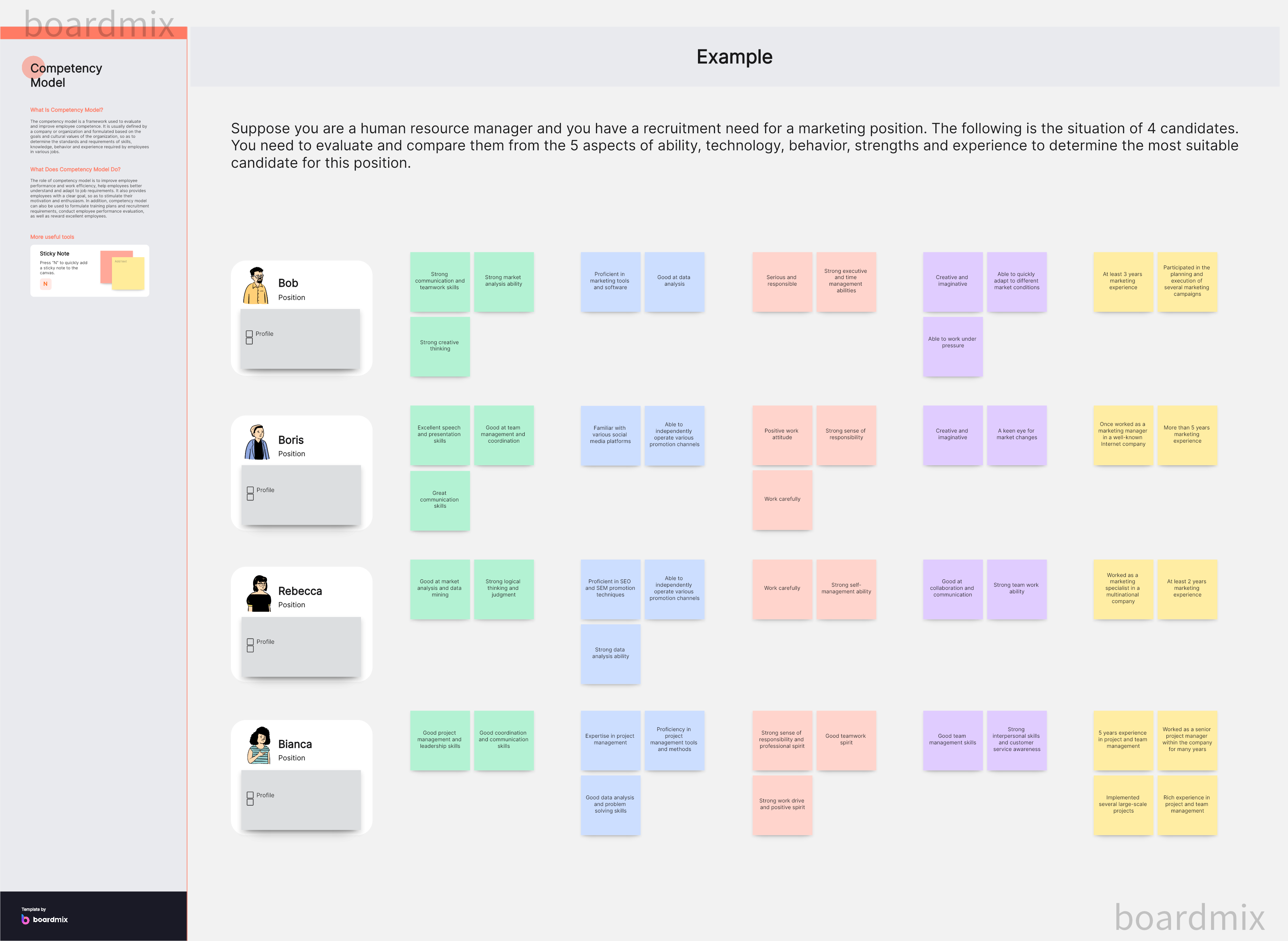
A competency model serves as a comprehensive framework outlining the specific skills, knowledge, behaviors, processes, and tools required to succeed in a particular job. Human resources professionals rely on this model to effectively identify the most suitable candidate from a pool of applicants when a job vacancy arises. They also use it to regularly evaluate and monitor the performance of existing employees to make sure that they are delivering outputs that meet standards, and to check if they are still fit for the position.
What should be included in a competency model?
The three main components that are essential to competency management are skills, behavior, and credentials. All of these are equally important and should be addressed thoroughly in a good competency model.
In the competency model template that we have here at Boardmix, five columns need to be filled in for each individual being considered for a particular position. The first two columns address the skills component, with the first column focused on Ability and the second one on Technology. Ability refers to specific talents for certain tasks like creative thinking or good communication skills, while technology refers to learned skills like proficiency in SEO techniques or aptitude in data analysis.
The behavior component refers to the inherent qualities of the candidate that can help them be more successful in performing their job. A knack for time management, and having a positive attitude towards work would fall under this category.
Next to this, our template also has a column for advantages, which are qualities that make the candidate stand out from the rest, especially in the field or position for which they are being considered.
Finally, the experience column addresses the credentials component in the competency framework. Prior work experience in the same field of work or a different but relevant area is crucial and must be seriously considered.
Benefits of the competency model
Competency modeling offers numerous benefits to HR managers, employees, and the entire organization. Regularly utilizing this model yields specific advantages that positively impact various aspects of the company.
Efficient recruitment
As we have repeatedly mentioned, a thorough consideration of all applicants is vital for finding the perfect individual for each position in the company. The very organized format of the competency model allows the recruitment team to easily compare candidates and quickly weed out those that are not very suitable for the position, efficiently narrowing down the choices until the right person is selected.
Maintenance of standards
It’s not only the new employees and job applicants that are subject to scrutiny. Organizations must regularly assess the performance of all employees to ensure that the high standards of the company are met at all times. This task is made easier by regularly using a competency model specifically to evaluate employees.
Career growth opportunities
Competency models benefit employees significantly within the organization. For instance, if employees aspire to be promoted to higher positions, they can identify the required competencies for their desired role. Armed with this understanding, they can focus on developing the relevant skills, showcasing improvement during competency evaluations, and distinguishing themselves from their peers, positioning them as strong candidates for promotion.
Organized workforce planning
The practice of being aware of competencies for each role in the organization gives business owners and managers the capability to make strategic decisions when it comes to workforce planning. A competency model clearly shows if skills are improving or declining in the company, and enables management to make the necessary adjustments to the workforce.
How to build a competency model
Building a competency model can be a huge challenge if you have never done it before. But with some proper guidelines, it is not that difficult. You can also make the process much easier by using the Boardmix competency model template, which is very well laid out and very simple to use.
Identify the purpose
The first step you need to take is to identify the purpose. Is it going to be for screening potential applicants for an open position? Is it for a regular evaluation of all employees in the organization? Also, you should define for whom you are making the model, whether it is for HR use only, or it is going to be accessible to the whole organization, and so on.
Research
Even the most proficient HR professional is not expected to know every single detail about all types of jobs. To get all the necessary information to build a feasible competency model, you will have to be very resourceful and creative in conducting research. Interview industry experts, conduct surveys, get feedback from management, or simply use your observations.
Create a draft
Based on the information you have gathered from your research, create a rough draft of the competencies for each position, including a brief description of what each employee is expected to do. We strongly recommend that you follow the template that we have here at Boardmix, which comes with a great layout and several useful tools.
Gain feedback
Before finalizing the competency model, it is crucial to have it reviewed by relevant persons first. Show it to management, industry experts, and even to employees that are to be evaluated. Get their feedback on the effectiveness of the model, given the purpose for which it is made.
Finalize
Take all the feedback that you have received and use them to refine the competency model. If there were competencies that you had initially missed, make sure to add them, while also removing those that have been deemed redundant. Make all the necessary enhancements, including clarifying confusing names and simplifying areas that are too complex.
Competency Model Templates
Dave Ulrich's HR Competency Model
This model emphasizes the four main roles of human resources professionals in an organization: strategic partner, change agent, employee champion, and administrative expert.
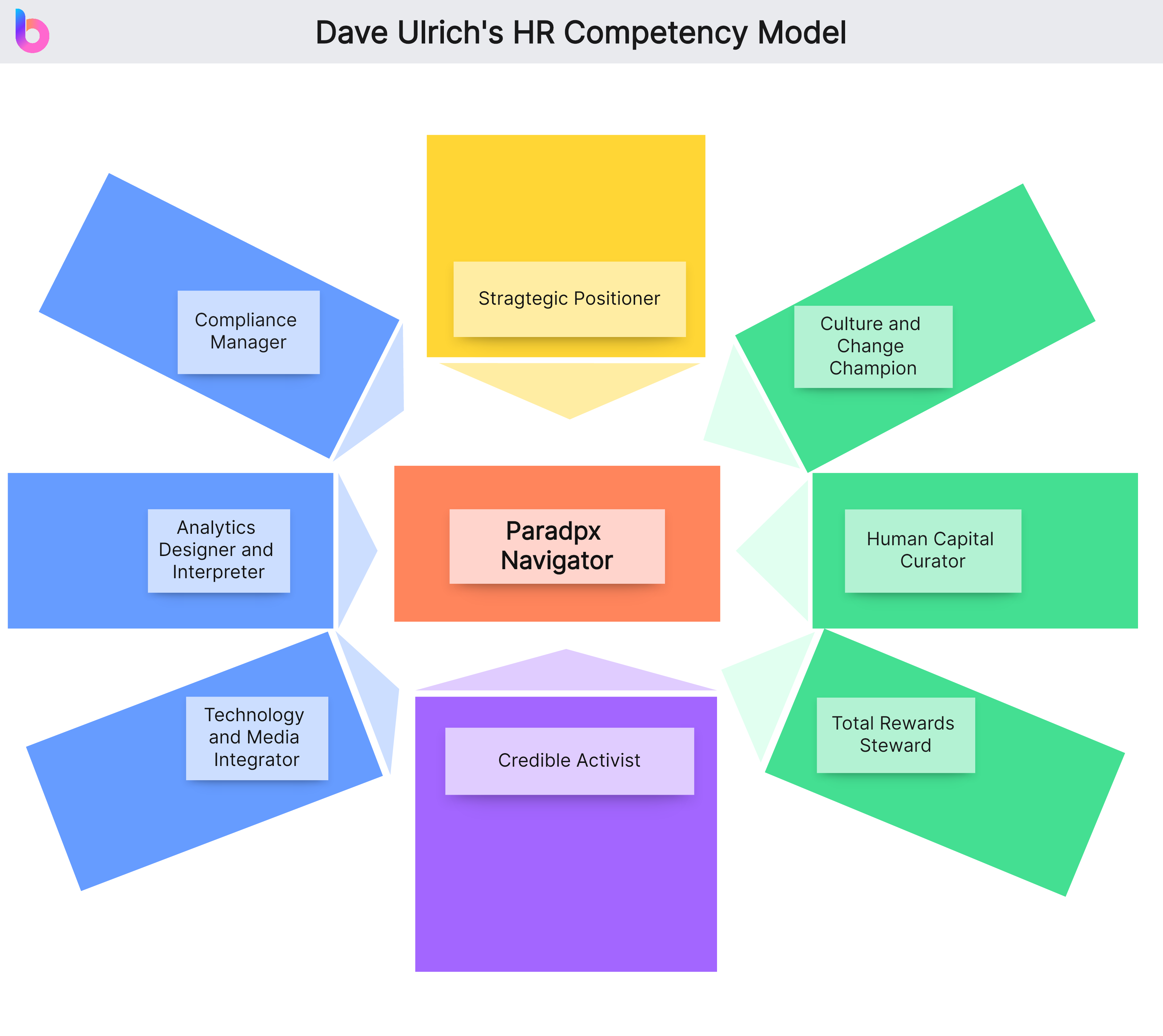
Society for Human Resource Management (SHRM) Competency Model

Chartered Institute of Personnel and Development (CIPD) HR Competency Model
CIPD's model includes ten main competency areas, including strategic insight, leadership, decision-making, relationship influence, etc.
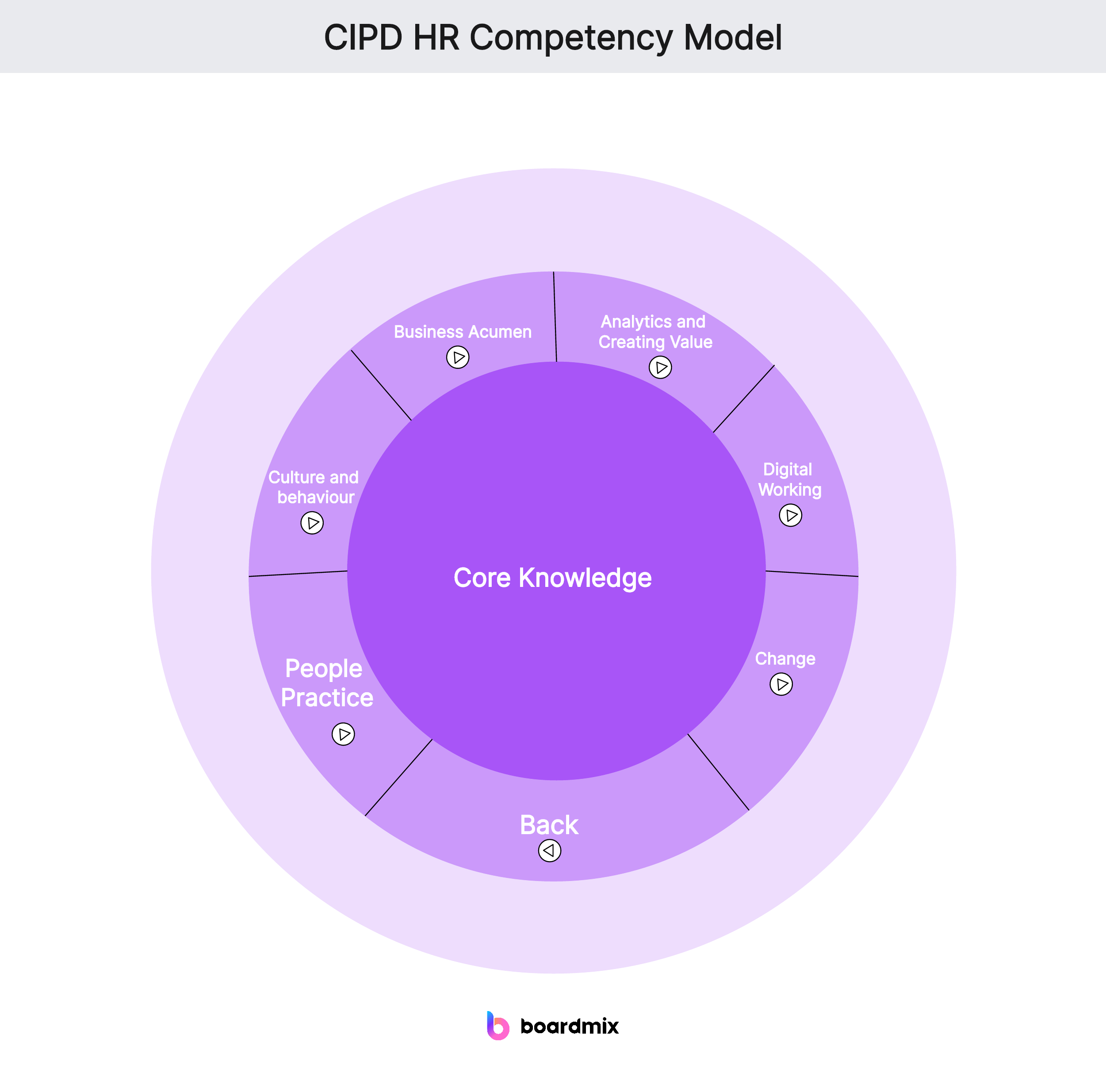
Competency Model Examples for Customer Service Representative
For a customer service representative, some key competencies might include:
Communication Skills: Communicating clearly and politely with customers.
Problem-Solving Ability: Effectively handling customer issues or complaints.
Product Knowledge: Understanding and mastering the company's products or services.
Calm Under Pressure: Keeping calm when dealing with angry or disappointed customers.

How to Create a Competency Model in Boardmix?
Creating a competency model example for employees in Boardmix requires following a series of steps. The guide below will take you through how to do this.
1. Log In and Access Boardmix
First, you need to log into Boardmix. If you don't have an account yet, you need to register one. After logging in, you will be taken to the homepage.

2. Search for Competency Model Template
In the left navigation bar, click on Template, then search and select the competency model you want. Or choose to create your own new template.
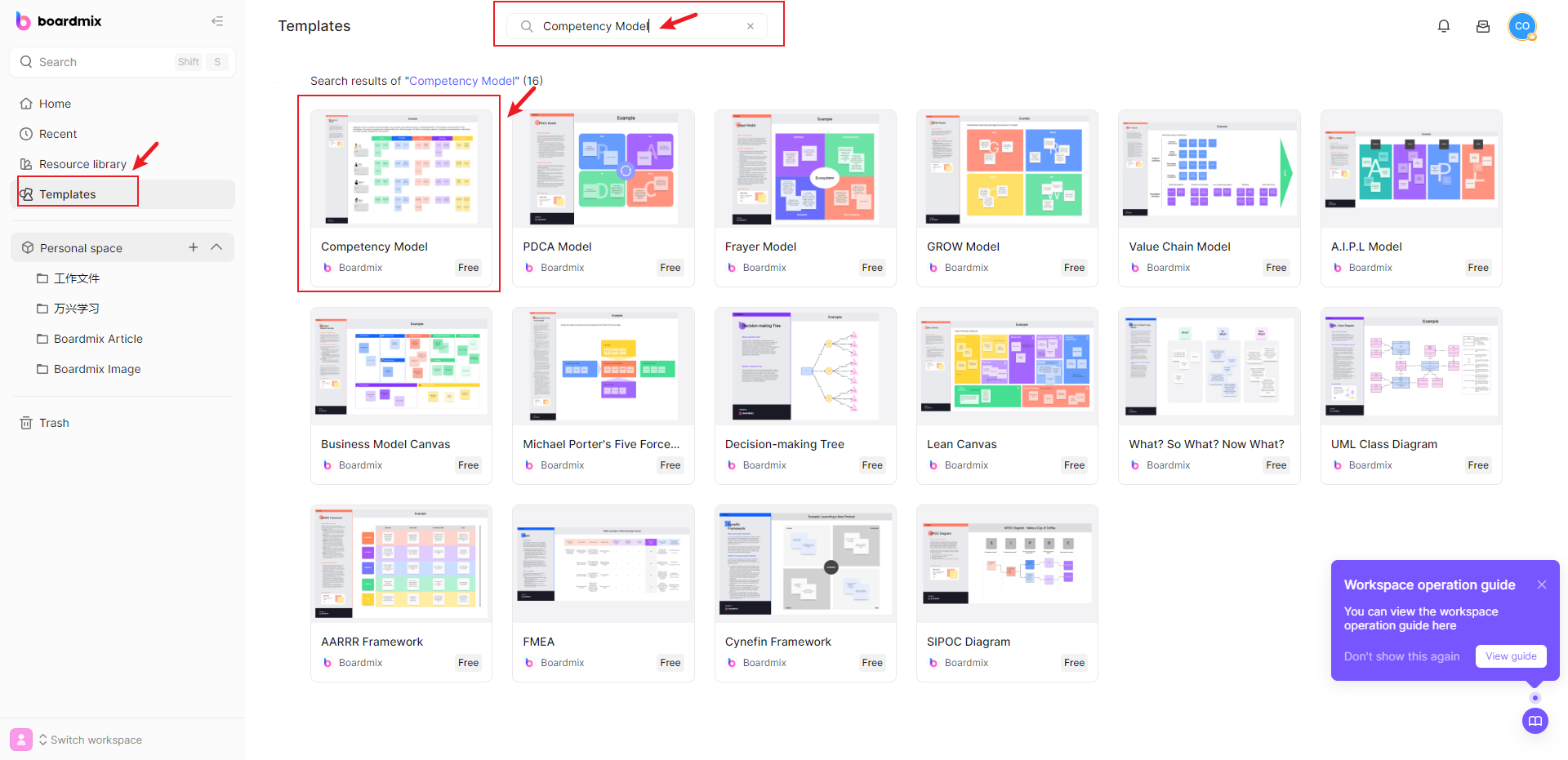
3. Fill in Model Information
You will be asked to fill in some basic information, including the name of the model, description, and objectives. In addition, you also need to choose a type for the model. This can be a generic type or a type specific to a certain position or department.

4. Add Competencies
Next, you need to add competencies for the model. These competencies should be chosen based on the selected model type and objectives. Each competency needs to fill in a name and description and may need to add related behavior standards or levels.
5. Save and Share Model
After adding all the necessary information and competencies, you can save and share your model so that other users can see and use your created model.
7. Feedback and Improvement
Finally, remember to regularly collect feedback and update and improve the model based on feedback.
FAQs about the competency model
What are the core competencies?
Core competencies encompass the full range of capabilities and resources possessed by a business, enabling them to strategize and execute operations effectively across all aspects of their operations.
What is the difference between competency and capability?
A capability is the combination of skills, behaviors, knowledge, and processes that are all used together towards achieving a goal or producing a result. Competency, on the other hand, refers to the measure of how an individual or a group performs a capability.
What is the purpose of a competency model?
A competency model serves as a valuable framework for identifying the essential skills and knowledge required for specific job roles within an organization. By utilizing these models, companies can effectively evaluate the performance of departments, teams, and individual employees, ultimately leading to improved productivity and success.


